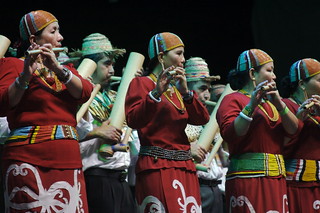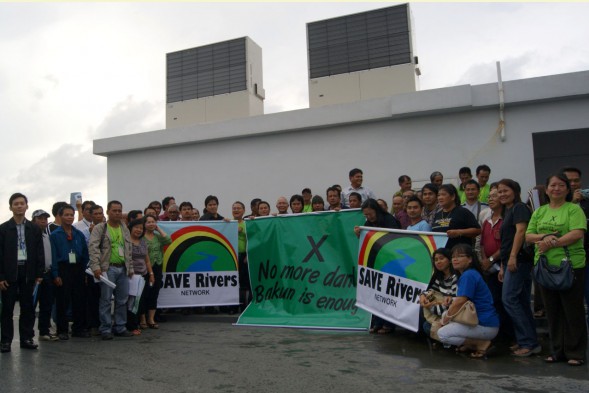 With a population of around six thousand the Kelabit are one of the smallest indigenous groups in Sarawak. Traditionally this people speak several different Kelabitic dialects belonging to the Borneo-Phillipine arm of the Austronesian language family. Today, many speak English and Malay languages due to concerted contact and migration.
With a population of around six thousand the Kelabit are one of the smallest indigenous groups in Sarawak. Traditionally this people speak several different Kelabitic dialects belonging to the Borneo-Phillipine arm of the Austronesian language family. Today, many speak English and Malay languages due to concerted contact and migration.
Historically most Kelabit groups inhabited Longhouses known as Barios in the Kelabit Highlands in the north eastern reaches of Sarawak. There they maintained a subsistence lifestyle which revolved chiefly around wet rice cultivation. In addition to growing this vital staple Kelabit fostered citrus fruits and other vegetable products and also owned buffalo, considered important status symbols. Hunting for bush meat and gathering vegetable matter and medicines supplemented growing activities. Kelabit traditional religious activities were entwined with local environmental phenomena. Bird augury and dream interpretation were important spiritual institutions and megaliths were erected to commemorate notable individuals. The Kelabit were also known as ferocious hunters, a reputation which inspired fear in other neighboring groups.
The traditional Kelabit lifeways as described here, with the exception of head hunting, continued largely unimpeded until after the Second World War. After fighting in the war alongside US forces however, rapid social and economic changes occurred as first schools and later Christian churches were introduced into Kelabit areas.
In terms of religious change Christianity has had a profound impact since its introduction, which is largely viewed in a positive light by the Kelabit. The 1973 Christian spiritual revival amongst the Kelabit people is held by many to be an important liberation event and the majority of the population are now Christians.
Technologically Western phenomena such as television, cinema and different forms of technology arrived in the 1980s to compound earlier social changes. These additions represent the supposed ‘modernization’ of the Kelabit during this period. Numerous Kelabit ‘updated’ their longhouses with generators and electrical appliances according to the prevailing direction of development thought at the time which held that the introduction such technology would inevitably see beneficial change.
The post war period also saw vast geographical shifts for the Kelabit which continue today. Many have now chosen to migrate to low lying urbanized areas. A trend which strongly echoes the Kelabit legend that non-highlanders were originally moved on from the highland birth place of all humans by a great flood. Now it is the highlanders themselves who have struck out down river. Those who have moved, many of whom are from the younger generations, rarely practice traditional Kelabit subsistence agriculture and have instead become involved in a cash economy.
Counteracting these changes wrung in over the last sixty years or so have been tireless efforts to maintain traditional Kelabit cultural practices alongside the additions recent history has brought. The endeavor shown by members of the Kelabit in this task has meant that today much of the culture remains. Master artists making beautiful instruments, and creating practical and decorative goods out of bamboo and rattan still exist. Traditional forms of adornment such as the beautifully worked weights worn in the ears to stretch them and elaborate tattooing are still visible, though usually amongst female elders in this case. Traditional Kelabit ceremonies and dances are still practiced whilst efforts to conserve and record Kelabit oral histories are ongoing. Many of those who have chosen to stay in the highlands maintain their traditional subsistence activities. The continuing virility and importance of these activities demonstrates that traditional knowledge and technology belong in and should be acknowledged as part of a ‘modern’ world rather than being viewed as ineffective anachronisms.
Kelabit efforts toward cultural conservation are not without obstacles however. The ongoing exodus of young Kelabit threatens to de-stabilise efforts toward cultural continuity whilst the interest of agricultural firms in developing the Kelabit highlands for large scale agriculture is worrying for those reliant on the land.



